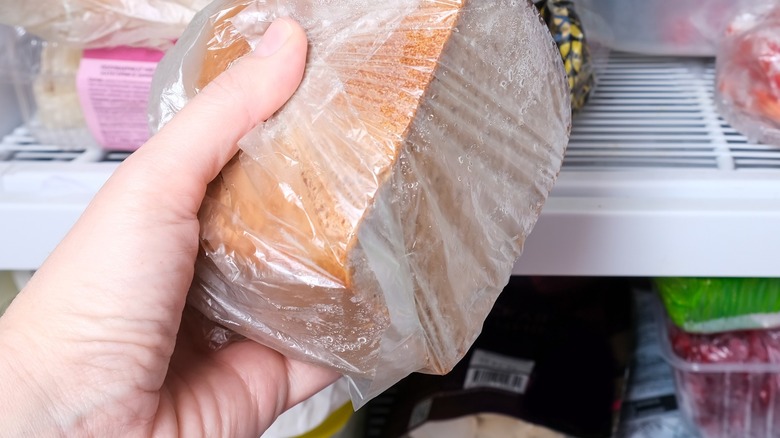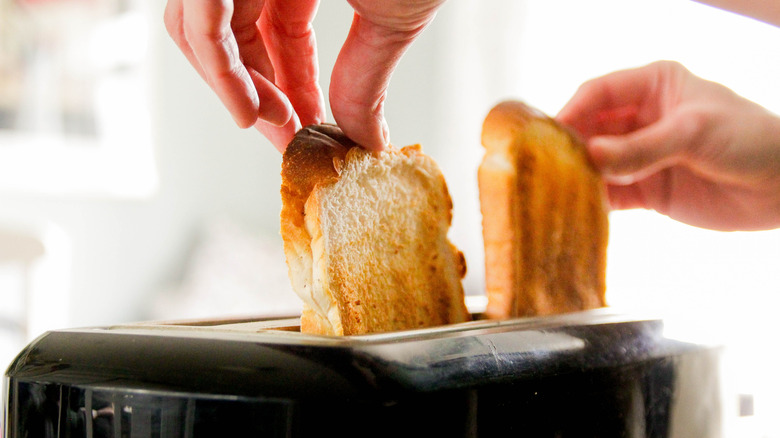The Best Way To Wrap Bread To Keep It Fresh In The Freezer
There's nothing like walking into a kitchen where the scent of fresh bread wafts in the air. That feeling is only second to devouring freshly baked, warm bread. But if you've miscalculated how much bread you bought at the store or got carried away baking, filling your kitchen with a towering stack of fresh loaves, you know how frustrating it can be to store your precious baked goods. We asked an expert to tell us the best way to wrap bread to keep it fresh in the freezer, and it's simpler than you think.
According to Chef Billy Parisi, owner of Parisi's Italian Kitchen in Crown Point, Indiana, the secret to wrapping bread correctly is to store it in an air-tight or vacuum-sealed container, where the bread can keep for up to three months. "You could double wrap the bread if you're going into things like a deep freeze just to provide another layer of protection," says Parisi. "Maybe wrap in parchment then plastic wrap".
The most important part of the process is to ensure that excess moisture and air are completely eliminated. "You don't want to get any ice crystallization [in] them which can mess up the texture and flavor, so make sure they're tightly wrapped or stored," Parisi advises. So next time you have too much bread, make sure to wrap it well and pop it in your freezer to enjoy at a later date.
How to thaw bread and not compromise flavor
Once you've put in the hard work and remembered to freeze your bread using Chef Parisi's tightly wrapped storage method, we recommend marking the freezing date in your calendar so you can enjoy it before it sits in the freezer for too long. Once you're ready to enjoy your bread, simply leave it unwrapped at room temperature until it's fully thawed. This may take a few hours, depending on the size of your loaf. After this, you can warm it up in the oven for up to 10 minutes at 350 degrees Fahrenheit, and it will taste like a freshly baked loaf. If you're short on time and your bread is sliced, you can also toast it directly in the toaster.
The only method you want to avoid is trying to thaw it in your microwave, as this will compromise your bread's taste and texture. With the right approach to freezing and thawing bread, you'll always be sure to enjoy fresh-tasting bread.

